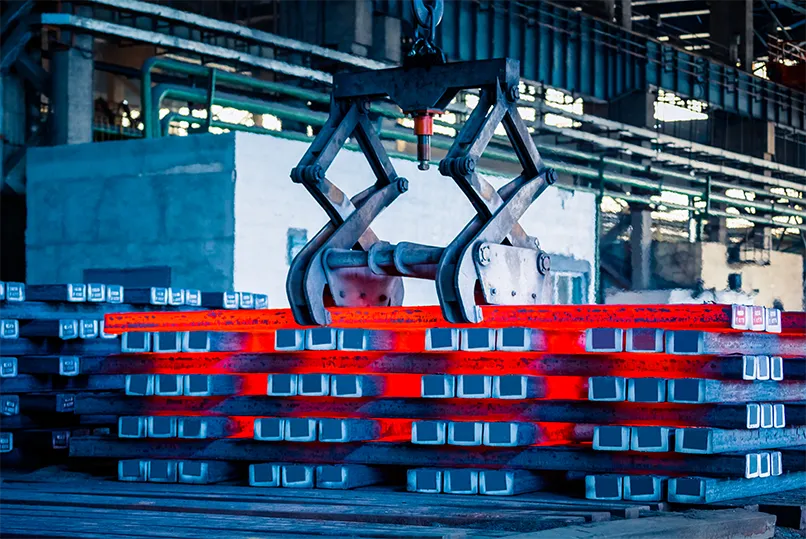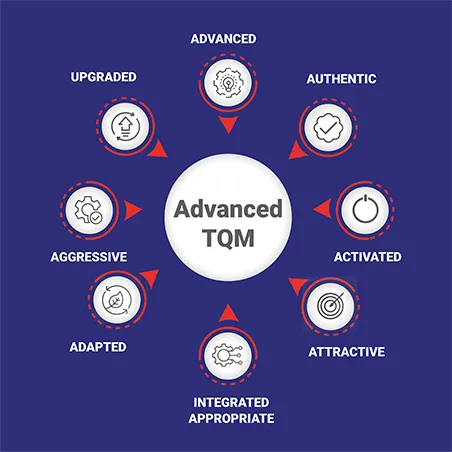
10 Reasons Why You Must Not Miss This Advanced TQM Workshop by Dr. Kano
January 8, 2022
What is Total Quality Management (TQM) and Where Can it be Applied?
February 2, 20223 Ways Indian Manufacturers Can Benefit from Data Analytics
India is one of the world’s most attractive investment destinations for the manufacturing sector. Successive governments in the country over the past decade have adopted a progressive growth strategy that eliminates bottlenecks for global companies to shift their manufacturing base to its shore and leverage the large and diverse talent pool of engineers and high-performing labour force.
Studies show that in 2020, manufacturing alone contributed close to 17.4% of India’s annual GDP despite the sector being severely impacted by the ongoing COVID-19 pandemic.
Additionally, India has stepped up its gear to offer supporting resources like cheaper power tariffs, favorable tax regimes, and healthy utilization of the large tract of natural resources lying across the length and breadth of the nation. All these factors combined have led to the manufacturing sector growing into one of the largest sectors in the country’s economic outlook in terms of employment and industrial output.
India is not averse to the digitization wave happening across the world and its manufacturing sector is aware of how technology-led innovations are turning into a competitive advantage in challenging market conditions. One of the most important digital assets that manufacturers can leverage for better decision-making and improved business practices is the adoption of data analytics. The Indian manufacturing scene is no exception in this regard.
The pandemic was an eye-opener for businesses in all sectors let alone manufacturing. India had imposed one of the toughest lockdowns in the world and for prolonged durations periodically leading to massive levels of disruptions for businesses, especially manufacturing where factories and industrial establishments had to remain shut to prevent the spread of COVID amongst workers. Manufacturing companies were caught unprepared, and lack of planning led to severe inefficiencies in the nation’s supply chain owing to low manufacturing output in some sectors while excessive inventory piled up owing to poor sales in others.
As we move into a new year, Indian manufacturers need to set their sights on adopting data analytics as a key tool to help them combat challenges and disruptions like the pandemic and create an efficient decision-making framework for their operations with data-driven insights.
Let us examine 3 ways in which data analytics can help manufacturers in India achieve a competitive advantage and sustain growth volumes even in the most challenging of market conditions:
Optimising Inventory
Manufacturers always need a healthy balance of inventory that prevents stock-outs when demand is high and eliminates increased warehouse costs when there is oversupply and less demand. In India, the complexity of demand and supply attains a whole new dimension since the country has a mix of diverse cultural and societal pluralism across different states.
This results in consumption patterns largely different from other nations. Festive seasons are spread throughout the year with each state or a group of states celebrating their key festivities at a different time. Festive spending is often the biggest demand driver for manufacturers and in this sense, India offers a highly complex web of trends that manufacturers must acquaint themselves with. This is where data analytics can bring about significant changes from the traditional model of wild guesses and biased decisions. The data pertaining to retail volumes, historical consumer trends, market dynamics, supply chain, and logistical nuances are all available for manufacturers to process and arrive at the right production and inventory management metrics. Through analytics run on these data sets, production houses can have real-time visibility into demand patterns and forecast their production capacities to ensure demand fulfilment while at the same time eliminating wastage.
Smart Maintenance
Being in one of the industries heavily dependent on machinery and equipment for daily operations, manufacturers often spend a fortune in repairing or replacing their critical machinery and allied infrastructure owing to wear and tear. However, by ensuring timely maintenance and optimum utilisation during work cycles, it is always possible to extend the life of machinery and lower running costs in the longer term. Through data analytics, it becomes possible to encourage the practice of predictive maintenance. By leveraging analytical processing of data on seasonal utilisation based on India’s consumption patterns, asset performance metrics, output measures, etc. Indian manufacturers can predict when a machine or equipment would face slower or weaker performance. This allows them to perform predictive maintenance to prolong the life of machinery and prevent wear and tear-induced production inefficiencies.
Eliminate Product Modelling Risks
India is a very demanding market. Consumers expect tailored products that fit their lifestyles and the country’s market dynamics. For example, automobiles made in India often have to deal with rough roads and challenging weather conditions while at the same time offering convenience and better fuel efficiency. To fulfil these demands, Indian manufacturers must take into account a wide number of scenarios when they model and design a product or its components. Increased complexity can result in risky flaws creeping into the design which can ultimately lead to negative customer experiences and expensive recalls for the product.
Analytics backed simulations however can help manufacturers leverage a solid data-driven modeling capability for their design needs. This makes the product development stage less prone to errors and ultimately helps manufacturers save on costs and prevent damage to their reputation.
Data analytics has the potential to aid Indian manufacturers in competing amongst their peers in one of the toughest global markets. From saving costs to improving product quality, the applications and use-cases are plentiful. All it takes is a strategic roadmap for executing data analytics within the manufacturing landscape.
Get in touch with us to explore how your manufacturing business can conquer new heights in 2022 with data analytics.





